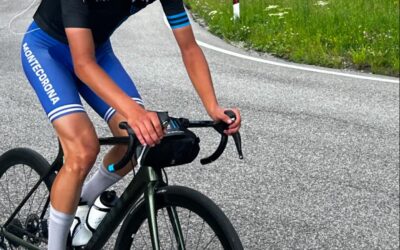Cycling at high altitudes presents unique challenges, especially regarding the weather. The conditions can change rapidly, and it’s crucial to be prepared. Whether you are a seasoned cyclist or new to high-altitude rides, understanding how to handle these weather challenges is essential for a safe and enjoyable experience.
How do you handle weather challenges when cycling at high altitudes?
To handle weather challenges when cycling at high altitudes it involves preparation, adaptability, and awareness. You must consider the following parameters:
- Check Weather Forecasts Regularly: Monitor the weather predictions to plan your ride accordingly.
- Dress in Layers: Wear multiple layers of clothing to adjust to changing temperatures.
- Bring Waterproof Gear: Keep waterproof jackets and gear handy to stay dry in case of sudden rain.
- Acclimate Properly: Spend time at high altitudes before your ride to get your body used to the thinner air.
- Stay Hydrated: Drink plenty of water as high altitudes can lead to quicker dehydration.
- Know the Signs of Altitude Sickness: Be aware of symptoms like headaches, dizziness, and nausea.
- Plan Your Route: Choose routes with shelters or safe spots to rest in case of severe weather.
- Carry Essential Supplies: Always have a first aid kit, extra food, and emergency equipment.
What it means
Cycling at high altitudes requires a strategic approach to manage weather challenges effectively. Here’s a detailed look at each point:
- Check Weather Forecasts Regularly: Regularly checking weather forecasts helps you anticipate and prepare for potential weather changes. Websites and apps can provide real-time updates, ensuring you’re not caught off guard by sudden storms or temperature drops.
- Dress in Layers: Layering is key to regulating your body temperature. Start with a moisture-wicking base layer, add insulating layers, and finish with a waterproof outer layer. This system allows you to add or remove clothing as needed.
- Bring Waterproof Gear: Waterproof gear, including jackets, pants, and shoe covers, is essential to keep you dry and warm. Being soaked at high altitudes can lead to hypothermia, so it’s crucial to have protective clothing.
- Acclimate Properly: Spending a few days at high altitude before your main ride can help your body adjust to the reduced oxygen levels. This can prevent altitude sickness and improve your overall performance.
- Stay Hydrated: High altitudes can cause you to dehydrate faster due to lower humidity levels and increased breathing rates. Carry a hydration pack or bottles and drink regularly to stay hydrated.
- Know the Signs of Altitude Sickness: Recognizing symptoms like headaches, dizziness, fatigue, and nausea can help you take early action. Descending to lower altitudes and resting are effective ways to mitigate these symptoms.
- Plan Your Route: Choosing routes with accessible shelters or safe spots to rest can provide a crucial safety net in case of extreme weather. Familiarize yourself with the terrain and potential escape routes.
- Carry Essential Supplies: Always pack a first aid kit, extra food, and emergency equipment. In case of an unexpected delay or injury, these supplies can be lifesaving.
Conclusion
Successfully managing weather challenges when cycling at high altitudes involves preparation, adaptability, and awareness. By following these strategies, you can enjoy the breathtaking views and exhilarating rides that high-altitude cycling offers while staying safe and comfortable. Deux Mille is paving the way for enthusiasts who tackle paved cols over 2,000 meters. For more information, reach out to Deux Mille.





